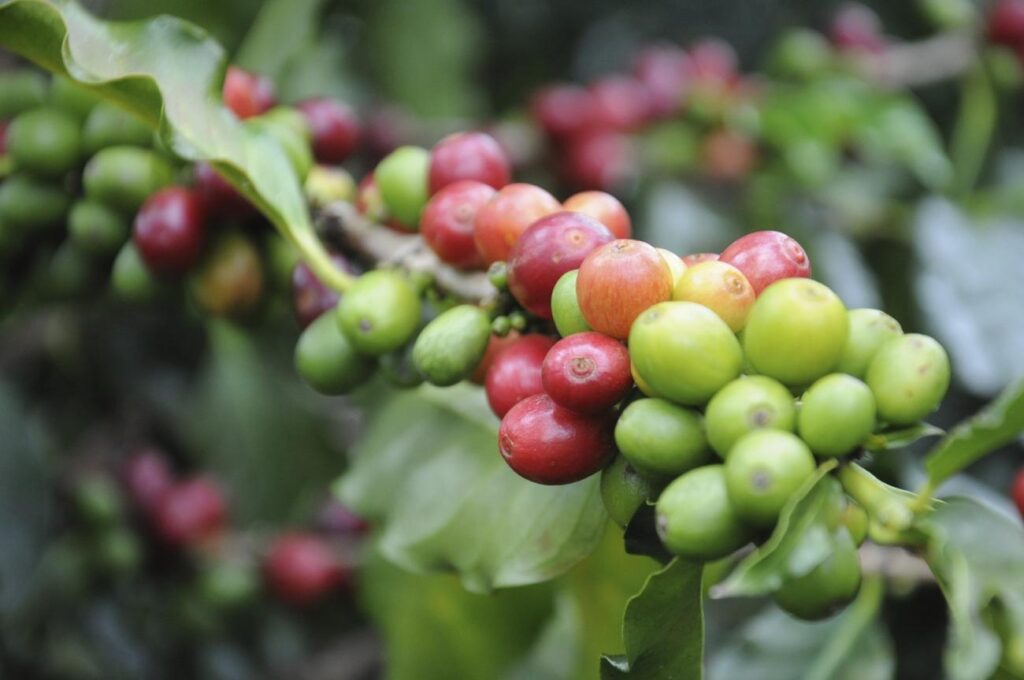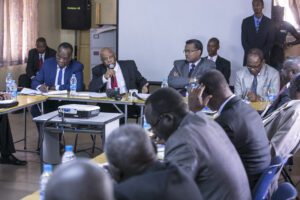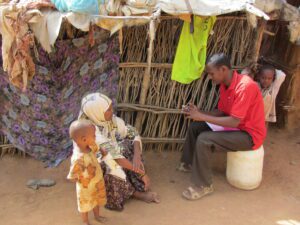Sustainable agriculture, like the tender nurturing of a delicate seedling, promises a future where both the earth and its farmers thrive in harmony. In Uganda’s coffee sector, this promise has taken root deeply, transforming farms, livelihoods, and ecosystems. But how do we measure the impact of these sustainable practices? How can we know that they are yielding not just greener crops but also richer lives? The answer lies in the delicate art and science of monitoring and evaluation tools.
These tools act as a mirror, reflecting the progress of Uganda’s coffee farmers who have embraced sustainability. This article explores how monitoring and evaluation tools assess the impact of sustainable agriculture, helping farmers understand how their efforts improve yield, restore the environment, and provide economic security.
Understanding Sustainable Agriculture in Uganda’s Coffee Sector
Uganda’s coffee farmers walk a tightrope, balancing the economic demands of producing high-quality coffee with the urgent need to protect their lands. Sustainable agriculture offers them a safety net, weaving together practices that respect both the soil and the soul of the farmer.
Key Sustainable Practices in Uganda’s Coffee Sector
In Uganda’s lush coffee hills, sustainable practices include:
- Agroforestry, where trees provide shelter and nutrients to coffee plants;
- Organic farming, which relies on compost and nature’s rhythms instead of chemical inputs;
- Water management, ensuring that every drop counts in a land where droughts and floods are too familiar;
- Crop diversification, which offers farmers multiple streams of income, protecting them from the volatility of coffee markets.
But how can farmers be sure that these methods are making a difference? This is where monitoring and evaluation tools step in, illuminating the path forward.
The Role of Monitoring and Evaluation Tools in Sustainable Agriculture
Like a compass guiding a traveler, monitoring and evaluation tools help farmers navigate the complexities of sustainable agriculture. They provide a way to measure, reflect, and adjust—ensuring that the farmers’ efforts bear fruit, both literally and figuratively. In Uganda’s coffee sector, these tools help farmers understand the tangible outcomes of their sustainable practices.
Why Monitoring and Evaluation Tools are Essential
Without monitoring and evaluation tools, sustainable practices would be like planting seeds without ever checking if they sprout. These tools offer clarity, answering the farmer’s silent questions: “Am I doing this right? Is the land healing? Will my family benefit?”
Monitoring and evaluation tools allow farmers to:
- Measure the impact of sustainable farming techniques on their crops and livelihoods;
- Track environmental changes, such as soil health and biodiversity;
- Understand economic benefits, from reduced input costs to increased market access.
For those seeking to delve deeper into the power of M&E tools in Uganda’s agriculture, this guide on monitoring and evaluation services offers a comprehensive insight.
Types of Monitoring and Evaluation Tools in Agriculture
There is no single way to monitor the progress of sustainable agriculture. Like the variety of tools in a farmer’s shed, there are multiple monitoring and evaluation tools, each suited to a specific purpose.
Qualitative vs. Quantitative Monitoring and Evaluation Tools
- Qualitative tools focus on the stories and experiences of farmers—capturing how they feel about their work and their land.
- Quantitative tools rely on hard numbers—yields, water usage, income changes—to show measurable progress.
Both approaches, used together, provide a full picture of sustainability’s impact.
Popular M&E Frameworks in Agriculture
- Logical Framework (Logframe): This approach breaks down projects into inputs, outputs, and outcomes, helping farmers see the broader arc of their work.
- Results-Based Monitoring (RBM): This tool focuses on the results, asking, “What change have we created?” It’s particularly useful for measuring long-term sustainability.
- GIS and Remote Sensing: These advanced tools use satellite imagery to track changes in land use and forest cover, essential for sustainable agroforestry practices.
By combining traditional farming wisdom with cutting-edge monitoring and evaluation tools, Uganda’s coffee farmers are cultivating both their crops and their futures.
Yield Improvements Through Sustainable Practices
The dream of every farmer is a healthy, abundant crop. Sustainable practices can make this dream a reality, but only if they are properly nurtured. Through monitoring and evaluation tools, farmers can measure their progress, witnessing how sustainability leads to richer harvests.
Agroforestry and Coffee Yield
Agroforestry, with its mix of trees and crops, creates an ecosystem where coffee plants thrive in dappled sunlight. This practice improves soil fertility and moisture retention, enhancing yields. With M&E tools, farmers can monitor plant health, soil conditions, and yield growth, ensuring that agroforestry continues to bear fruit.
Soil Health and Organic Farming
The soul of a farm is its soil, and organic farming practices restore that soul. By using natural fertilizers and compost, Ugandan coffee farmers improve their soil health year after year. Monitoring and evaluation tools help them track these changes, measuring nutrient levels and plant growth, proving that organic methods are not just sustainable—they are also profitable.
Environmental Impacts of Sustainable Agriculture
Sustainable agriculture is more than just a set of farming techniques—it’s a movement that seeks to heal the earth. The monitoring and evaluation tools used in Uganda’s coffee sector don’t just track yields—they also monitor the land itself, ensuring that the environment flourishes alongside the farmers.
Agroecology and Biodiversity
Agroecology encourages a tapestry of life to emerge on farms, with plants, animals, and insects all playing their part. M&E tools measure biodiversity by counting species, tracking their health, and ensuring that this delicate web remains intact. Through these tools, farmers can see the beauty they are restoring to the land, knowing that their efforts are making a difference.
Water Conservation and Its Impact
Water is life, but it is also fleeting in Uganda’s changing climate. Sustainable practices like drip irrigation and water catchment ensure that farms remain green even during dry spells. Monitoring and evaluation tools track water usage, showing farmers exactly how much water they save and how efficiently they use it.
For those interested in exploring broader global approaches to M&E in agriculture, this external link to FAO’s agricultural monitoring provides valuable resources.
Economic Benefits for Farmers
Sustainability isn’t just about the earth—it’s about people. For Uganda’s coffee farmers, sustainable practices offer a chance to improve their livelihoods. With the help of monitoring and evaluation tools, farmers can measure these economic gains and ensure that sustainability is not just a dream, but a path to prosperity.
Increased Market Access
Sustainable practices open doors to premium markets, where certifications like Fairtrade and Rainforest Alliance command higher prices. M&E tools track how these certifications affect farmers’ incomes, showing them how sustainability is their ticket to better earnings and improved livelihoods.
Reduced Costs of Farming Inputs
By relying on natural inputs like compost and reducing the use of chemicals, sustainable farming helps reduce costs. Monitoring and evaluation tools capture these savings, helping farmers realize that sustainability doesn’t just protect the earth—it protects their bottom line, too.
Challenges in Implementing Monitoring and Evaluation Tools
Even with all the benefits, the road to implementing M&E tools in Uganda’s coffee sector isn’t without its bumps. Many farmers face challenges such as limited access to technology, difficulties in data collection, and a lack of training. Overcoming these barriers requires investment in training programs and making M&E technology more accessible.
Success Stories from Uganda’s Coffee Sector
There are countless stories of farmers in Uganda whose lives have been transformed by the combination of sustainable agriculture and monitoring and evaluation tools. One farmer from the Western Region saw a 30% increase in his coffee yields after switching to organic farming and using M&E to track soil improvements. His farm now thrives, a testament to the power of sustainability when paired with the right tools.
Conclusion
Monitoring and evaluation tools are the silent guardians of sustainable agriculture, ensuring that every effort put forth by Uganda’s coffee farmers counts. These tools not only track yield improvements and environmental changes but also illuminate the economic benefits for farmers, showing that sustainability is a path worth walking.
As Uganda’s coffee sector continues to embrace these practices, monitoring and evaluation tools will be the compass guiding farmers toward a future where sustainability and prosperity go hand in hand.
FAQs
- What are the main sustainable practices in Uganda’s coffee sector?
- Agroforestry, organic farming, water management, and crop diversification form the backbone of sustainable practices in Uganda’s coffee sector.
- How do monitoring and evaluation tools help in sustainable agriculture?
- They track progress, measure yield improvements, monitor environmental health, and assess the economic impact on farmers.
- What environmental benefits can be tracked with monitoring and evaluation tools?
- These tools can measure improvements in biodiversity, water conservation, and soil health, ensuring that sustainable practices benefit the environment.
- How do sustainable practices increase coffee yield and farmer incomes?
- By improving soil health, reducing input costs, and opening access to premium markets, sustainability boosts both yield and income.
- What are the challenges in using monitoring and evaluation tools in Uganda’s coffee sector?
- Challenges include access to technology, training for farmers, and collecting reliable data.
For further help with Monitoring and Evaluation tools in Uganda’s agriculture sector, visit this link.






